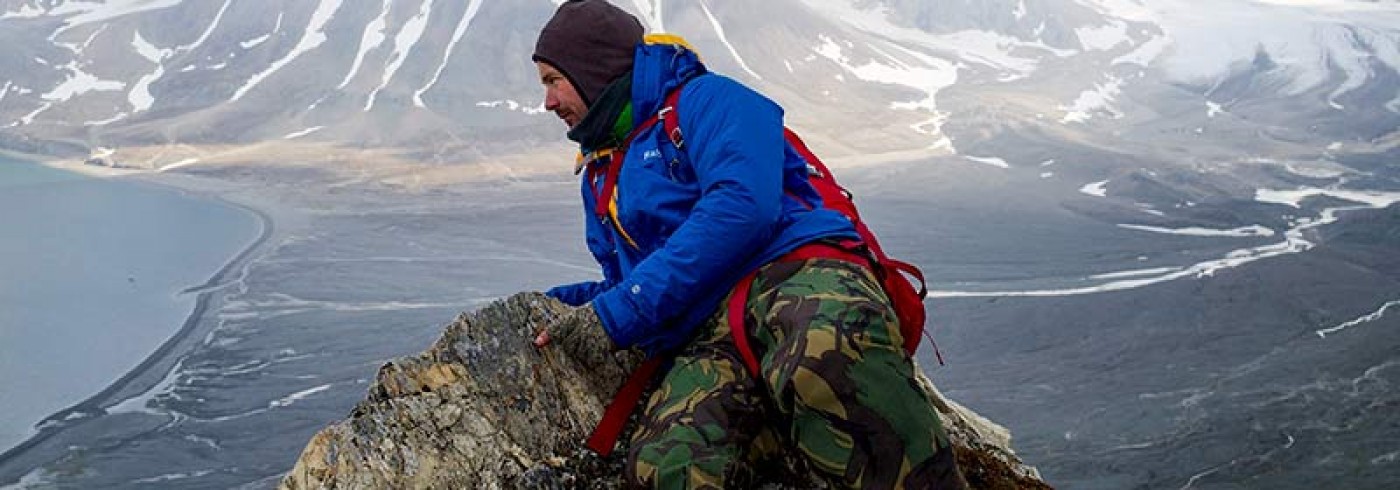Historical climate in the Arctic, the ICEBOUND project
6 August 2014 - 23 August 2014
The research team assembled on the sailing boat S/Y Aleiga, base of the Svalbard fieldwork. From left: Björn Gunnarson, Hans Linderholm, Anne Hormes, Toby Koffman, Will Philipps, Mauricio Fuentes, Anders Aulie (2nd skipper), and Niklas Gerhardson (skipper). Photo: Hans Linderholm
The aim of this project was to unravel the configuration and ice stream directions of the Svalbard Barents Sea ice sheet. Detailed knowledge about the past deglaciation processes can serve as analogues for present climate-ice sheet interactions in Antarctica and Greenland. Also tree-ring data was collected to provide information about past variability in Arctic sea-ice coverage and ocean currents, which is needed to understand how this sensitive region has responded to climate change in the past.
We visited Kongsøya, a remote and seldom visited island with the highest isostatic rebound in Svalbard, making it a key-site for ice sheet configuration reconstructions. Moreover, on this remote island, several thousand years old driftwood can be found, providing data for most of the Holocene.
We sampled bedrock and glacially transported boulders using an isotopic toolbox which will now help us to decipher the timing of deglaciation, and also determine the long-term burial and erosion history. The around 400 driftwood samples will be studied according to their provenance, dated and measured. Most of the wood on today’s beaches is recent, but we estimate that our oldest samples will be at least 3000 years old.









